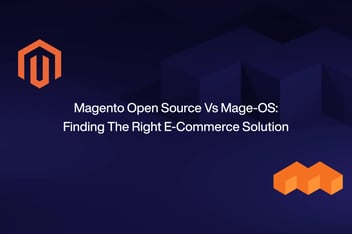Since Magento 1’s launch more than 14 years ago, a lot has happened, and since June 30, 2020, Adobe has formally stopped supporting Magento 1. Let’s look at a few of the key aspects related to Magento 2 migration.
Security
Adobe has formally stopped releasing security updates and patches. Therefore, if your Magento 1 site is ever the target of a security breach, you may need to hire an expert, which could end up costing you much more than the Magento Migration!
Performance
Magento 2 sites will often run 28 percent faster than Magento 1 sites due to good order processing and response times compared to Magento 1 sites, which boost sales and search engine rankings. The user experience may be directly impacted by speed.
New enterprise features like a potent page builder are among the fantastic new enterprise features supported by the most recent Magento versions. The fact that Magento is based on a new and better caching technology, which results in more efficiency and quicker page loading, is an even bigger plus and better Google rankings equate to faster page speeds.
Customers that purchase on Magento 2 benefit from features like improved search, product video carousels, and social sharing widgets.
Compared to Magento 1, Magento 2 offers quicker order processing and server response times. The customer experience of your online store is compromised if you are still using Magento 1. Speed has a direct bearing on how customers interact with your online store.

Intuitive Checkout
Magento 1’s cumbersome six-step checkout process is replaced by Magento 2’s straightforward two-step checkout and Instant Purchase feature. With Instant Purchase, retailers can now provide returning customers with a quicker checkout process by using previously saved payment and shipping details to skip the checkout process entirely and take the client directly to a confirmation purchase page. In the past, sites with simpler checkout processes (such as quick purchase) have experienced higher sales.
SEO
Search Engine Optimization is crucial when selling things straight online. More conversions and, subsequently, more income may result from improved SEO. By putting some of the capabilities into practice, Magento 2 has made it simpler for store owners to optimize their pages and items for greater reach. The usage of canonical tags, meta titles, descriptions, and keywords is allowed. They can even use the built-in functions to make their website mobile-friendly.
Better Admin Interface
Unlike Magento 1, which has a challenging learning curve, it is straightforward, user-friendly, and easy to learn. You may easily change the look of the store without knowing any code, thanks to Magento 2’s drag-and-drop layout modification tool. To increase productivity, the dashboard can be customized to provide immediate access to information based on your needs.
Payment Gateway Integration
Magento 1 site owners had to use additional third-party integrations to connect to well-known payment gateways. However, Magento 2 comes with three built-in payment processors: PayPal, Authorize.net, and Braintree available for integration.
All things considered, it is obvious that a Magento 2 migration is essential for your eCommerce firm if it wants to remain competitive.




